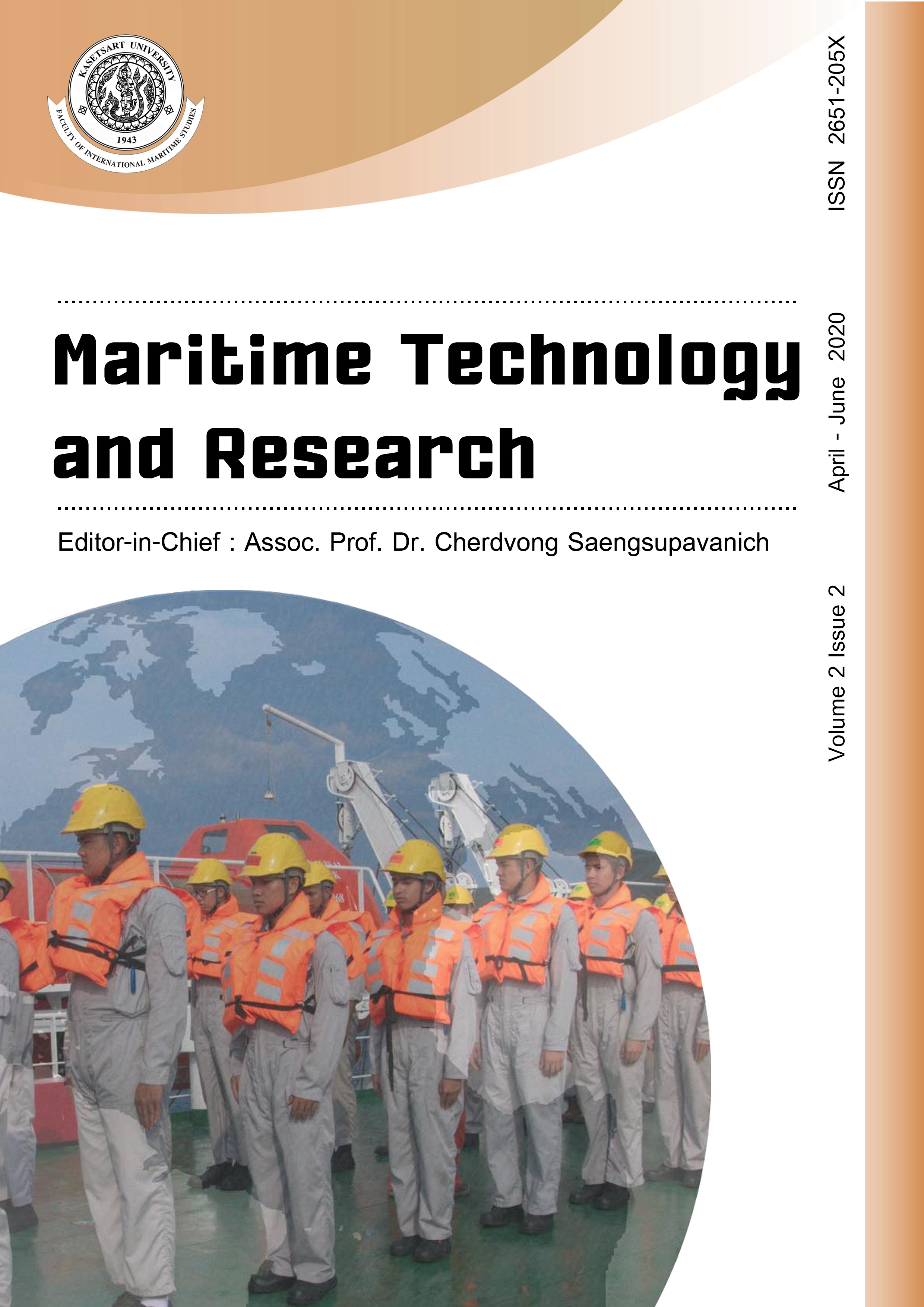A “Net-Centric” conduct of navigation and ship management
DOI:
https://doi.org/10.33175/mtr.2020.227028Keywords:
Conduct of navigation, Ship equipment and systems, Situational awareness, Net-Centric, Ship managementAbstract
Following the so-called “Industrial Revolution”, the shipping industry has benefitted from a very extended number of technology innovations. Over time, shipbuilding practices and the equipment of ships have been significantly improved. Furthermore, during the last couple of decades, the continuous improvement and integration-interconnection of electronics systems (the “network-centric” approach), have created a new operating environment for shipping. It is therefore not a coincidence that recent discussions on digitalization and autonomous ships provide a disruptive picture of how this industry may be transformed in the near future. Contemporary sea-going vessels are equipped with various technologically advanced systems and are highly automated. Today, all systems supporting the conduct of navigation and the various information technology (IT) applications related to ship management activities are heavily reliant upon real-time information to safely/effectively fulfil their allocated tasks. The issues of connectivity and interconnection clearly stand out. It is important to assess how navigation will be conducted in the near future. This analysis is based on a qualitative methodology, and its starting point, which also serves as the necessary “literature review”, is to identify and briefly discuss a certain number of technological developments that follow the network-centric architecture and have been recently introduced as equipment appropriate for ships. Next, it will examine how interactive processes and applications, both on the shore side and onboard vessels, can facilitate a safer working environment for seafarers and allow personnel based ashore to have a better understanding of what is happening at sea, as part of explaining the so-called “net-centric” framework of operations. Another important aim is to evaluate these promising technological trends according to their capacity of adoption in order to promote efficient and safe operations within the extended maritime transport domain. An important conclusion is that a net-centric philosophy and associated software applications can truly break down any existing limitations and create a collaborative environment for people and “machines”, including remotely controlled unmanned vessels.
References
Baldauf, M., Dalaklis, D., & Kataria, A. (2016). Team training in safety and security via simulation: A practical dimension of maritime education and training. In Proceedings of the 10th International Technology, Education and Development Conference, Valencia, Spain. doi:10.21125/inted.2016.0983
Baldauf, M., Kitada, M., Mehdi, R., & Dalaklis, D. (2018). E-Navigation, digitalization and unmanned ships: Challenges for future maritime education and training. In Proceedings of the 12th International Technology, Education and Development Conference, Valencia, Spain. doi:10.21125/inted.2018.2374
Blanchard, B., & Blyler, J. (2016). System engineering management. New Jersey, USA: Wiley.
Dalaklis, D. (2004). Monitoring the progress of the Navy Marine Corps Intranet (NMCI): Implementation, performance and impact. Retrieved from https://core.ac.uk/download/pdf/36695426.pdf
Dalaklis, D. (2017). Safety and security in shipping operations. In Visvikis, I., & Panayides, P. (Eds.). Shipping operations management (pp. 197-213). Cham, Switzerland: Springer International Publishing.
Dalaklis, D. (2018). Exploring the issue of technology trends in the “Era of Digitalization”. Retrieved from https://www.researchgate.net/publication/325877588_Exploring_the_Issue_of_Technology_Trends_in_the_Era_of_Digitalisation
Dalaklis, D., Baldauf, M., & Kitada, M. (2018). Vulnerabilities of the automatic identification system in the era of maritime autonomous surface ships. Retrieved from https://www.researchgate.net/publication/325688207_Vulnerabilities_of_the_Automatic_Identification_System_in_the_Era_of_Maritime_Autonomous_Surface_Ships
Dalaklis, D., Siousiouras, P., & Nikitakos, N. (2009). Enforcing safety and security in the eastern Mediterranean: The Greek effort to implement vessel traffic services. International Hydrographic Review, 1(1), 35-43.
Duru, O. (2010). Theory of shipping productivity revisited: industrial revolution, ship technology and shipping freight rates. Retrieved from https://jshet.net/docs/conference/74th/duru.pdf
Fingar, P., & Aronica, R. (2001). Death of "e" and the birth of the real new economy: Business models, technologies and strategies for the 21st century. Tampa, USA: Meghan-Kiffer Press.
Heath, D. (2018). The fourth industrial revolution is upon us, but what does this have in store for both UK engineering and global beauty. Retrieved from https://cutitronics.com/2018/02/22/dr-david-heath-the-fourth-industrial-revolution
Kitada, M., Bauldauf, M., Mannov, A., Svendsen, P. A. S., Baumler, R., Schroder-Hinrichs, J. U., Dalaklis, D., Fonseca, T., Sshi, X., & Lagdami, K. (2018). Command of vessels in the era of digitalization. In Kantola, J., Nazir, S., & Barath, T. (Eds.). Advances in human factors, business management and society (pp. 339-350). Cham, Switzerland: Springer International Publishing.
Kossiakoff, A., Sweet, W., Seymour, S. J., & Biemer, S. M. (2003). Systems engineering principles and practice. New Jersey, USA: John Wiley Hoboken.
Lehmacher, W. (2017). Fourth industrial revolution has shipping in its sights. Retrieved from https://www.joc.com/technology/fourth-industrial-revolution-has-shipping-its-sights_20171016.html.
Nanayakkara, T., Sahin, F., & Jamshidi, M. (2009). Intelligent control systems with an introduction to system of systems engineering. Boca Raton, USA: CRC Press.
Nikitakos, N., Dalaklis, D., & Siousiouras, P. (2018). Real time awareness for MRV data. In Ölçer, A.I., Kitada, M., Dalaklis, D., & Ballini, F. (Eds.). Trends and challenges in maritime energy management (pp. 53-63). Cham, Switzerland: Springer International Publishing.
Norris, A. (2008). Integrating ship bridge systems Vol 1 “RADAR and AIS”. London, UK: Nautical Institute.
Norris, A. (2010). Integrating ship bridge systems Vol 2 “ECDIS and Positioning”. London, UK: Nautical Institute.
Pallikaris, A., Katsoulis, G., & Dalaklis, D. (2016). Electronic navigation equipment and electronic chart display and information systems. Athens, Greece: Eugenides Foundation.
Pietak, A., & Mikulski, M. (2009). On the adaptation of CAN BUS network for use in the ship electronic systems. Polish Maritime Research, 4(62), 62-69. doi:10.2478/v10012-008-0058-9
STM Consortium. (2019). About sea traffic management. Retrieved from https://www.stmvalidation.eu/about-stm
Testa, L. (2009). Growing software: Proven strategies for managing software engineers. San Francisco, USA: No Starch Press.
Tetley, L., & Calcutt, D. (2001). Electronic navigation systems. Oxford, U.K: Butterworth Heinemann.
United Nation Conference on Trade and Development. (2018). Review of maritime transport. Retrieved from https://unctad.org/en/PublicationsLibrary/rmt2018_en.pdf
US Department of Defense. (2007). Net-Centric services strategy: Strategy for a Net-Centric service oriented DoD enterprise. Retrieved from https://dodcio.defense.gov/Portals/0/documents/DoD_NetCentricServicesStrategy.pdf
West, J., Dean, T., & Andrews, J. (2012). Network + Guide to networks. Boston, USA: Cengage Learning.
World Maritime University. (2019). Transport 2040: Automation, technology, employment - The future of work. Retrieved from https://commons.wmu.se/lib_reports/58
Downloads
Published
Issue
Section
License
Copyright: CC BY-NC-ND 4.0








